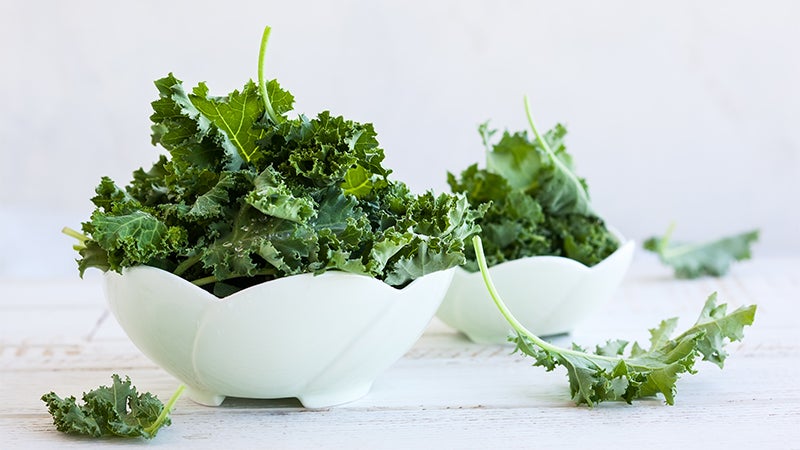Healthy for the new year
Published 4:53 pm Thursday, December 28, 2017
Let’s think healthy for the new year. One way to do that is local.
So, what is local? There is no cut and dry definition of “local,” and it tends to mean different things to different people. Some consumers think of local in terms of mileage, and try to subscribe to the “100-mile diet.” The 2008 Farm Bill defined local/regional as food grown and transported less than 400 miles, or within the same state. No matter what your definition of local is, cooking food at home is the best way to keep you and your family healthy.
The percentage of money Americans are spending on food away from home has increased over time, while the percentage of money spent on food at home has decreased over time. In other words, Americans are eating out more and cooking at home less. Eight in 10 Americans report eating fast food at least once monthly, with almost half saying they eat fast food at least weekly. Although Americans are eating fast food a little less often today, fast food is still a major part of the U.S. diet.
Eating out usually means larger portion sizes, more calories and fat, fewer fruits and vegetables, less whole grains and fiber, and higher cost. In fact, there is a growing body of evidence that says when we eat out, we are likely to eat more calories than we need and people who eat out more often are more likely to be an unhealthy weight.
Research shows that individuals and families who eat more foods at home consume a healthier diet. Eating and preparing more meals at home is a big step towards eating healthy. Eating at home means having more control over what we eat and how much we eat. When we eat at home (or carry food with us from home) we usually eat more fruits and vegetables and fewer calories. Enjoying meals at home is important to achieving and maintaining a healthy weight. Eating at home can also save you money, because it is less expensive.
Buying fruits and vegetables in season is more affordable and is a great way to experiment with fresh and different foods. Each season brings its own unique foods.
So, what does winter have to offer? You might be surprised by the variety. Since most fruits and vegetables can be found year-round in the grocery store, it can be difficult to determine which ones truly are “in season.” A wide variety of things can be found this time of year including turnips, broccoli, leafy greens with asparagus and spinach showing up before the first sign of spring.
If you like kale, it can be found almost year round and even locally. Check out the local winter market in Columbus, open every Saturday morning.
Jimmi Buell, Extension Agent, Family and Consumer Sciences, Polk County Center of the NC Cooperative Extension Service, teaches cooking and nutrition classes with a focus on improving health with better food choices. She can be reached at jimmi_buell@ncsu.edu or 828-894-8218.
Kale Salad
From the Smitten Kitchen
INGREDIENTS
1/2 cup (105 grams or 3 3/4 ounces) walnut halves or pieces
1/4 cup (45 grams or 1 1/2 ounces) golden raisins
1 tablespoon white wine vinegar
1 tablespoon water
1/4 cup panko (15 grams or 1/2 ounce) or slightly coarse homemade breadcrumbs (from a thin slice of hearty bread)
1 tiny clove garlic, minced or pressed
Coarse or kosher salt
3 tablespoons olive oil
1 bunch (about 14 ounces or 400 grams) Tuscan kale (also known as black or lacinato kale, this is the thinner, flatter leaf variety), washed and patted dry
2 ounces (55 grams) pecorino cheese, grated or ground in a food processor (1/2 cup total)
Juice of half a lemon
Freshly ground black pepper or red pepper flakes, to taste
DIRECTIONS
Prepare walnuts: Heat oven to 350. Toast walnuts on a baking sheet for 10 minutes, tossing once. Let cool and coarsely chop.
Prepare raisins: In a small saucepan over low heat, simmer white wine vinegar, water and raisins for 5 minutes, until plump and soft. Set aside in liquid.
Prepare crumbs: Toast bread crumbs, garlic and 2 teaspoons of the olive oil in a skillet together with a pinch of salt until golden. Set aside.
Prepare kale: Trim heavy stems off kale and remove ribs. I always find removing the ribs annoying with a knife, because the leaves want to roll in on the knife and make it hard to get a clean cut. Instead, I’ve taken to tearing the ribs off with my fingers, which is much easier for me. Stack sections of leaves and roll them into a tube, then cut them into very thin ribbons crosswise.
Tear kale into bite size pieces. Fill a bowl and drizzle olive oil over it. Add sea salt and massage it until it is about half the amount.
Add walnuts and craisins. Best if made a day ahead. Then add balsamic vinegar or glaze. Or could add any type of nuts and avocado. Or you can add other fruit and use lemon juice instead of balsamic.






